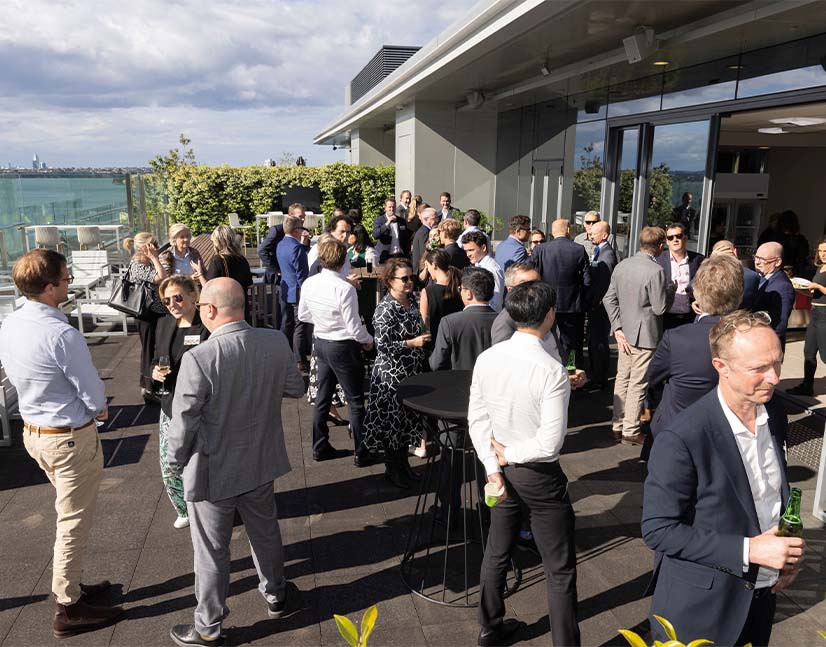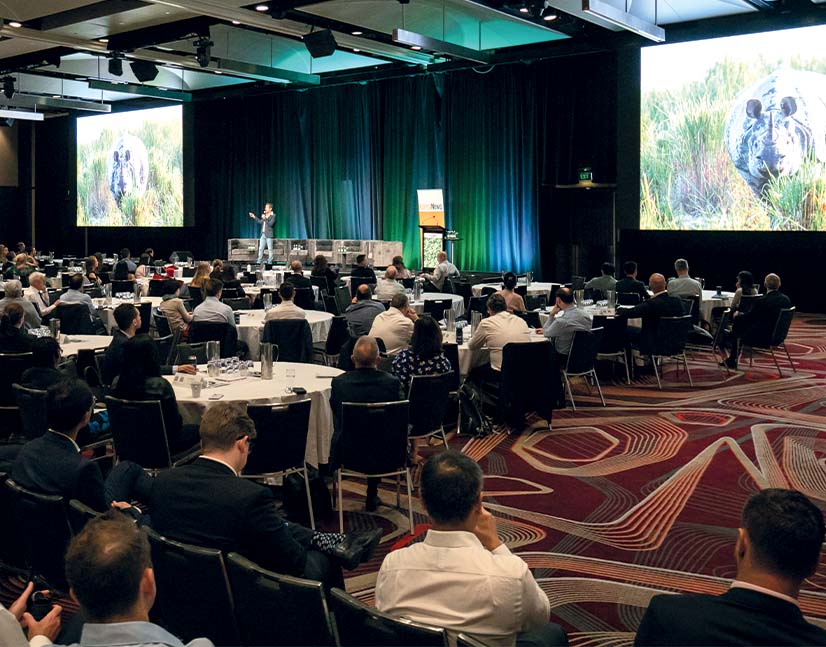
Biodiversity becomes too big to ignore even as complexity caps action
The nature crisis may be less widely discussed than the climate crisis but – as well as being a tragedy on its own terms – it represents no less of a threat to human wellbeing. Sustainable finance has the chance to learn from decades of gradually evolving expertise in the climate space to deliver faster action on biodiversity, according to participants at an ANZ-KangaNews roundtable that took place in Sydney in September. But the window to act will not stay open forever.
BIODIVERSITY IN CONTEXT
Craig Why is biodiversity becoming such an important focus area in the world of sustainable finance?
HOGG As a scientist, for more than 20 years I feel like I have been screaming into a void that a nature crisis is coming. Finally, everyone is starting to pay attention.
The biodiversity and climate change crises are two sides of the same coin. But climate change scientists have been much better at highlighting issues and how to address them. This is in part because climate issues are more tangible and knock-on effects are more direct: if we stop using fossil fuels, we will reduce CO2 emissions.
Biodiversity is more nuanced and it is also more localised, which makes investment more challenging. We have to fix biodiversity in our own backyards before we can start to have an impact further afield.
The crux of the biodiversity crisis is that everything we do is dependent on nature – even for those who claim they don’t like being in nature. As someone who does, it was interesting to see the number of people who ventured outside during the COVID-19 pandemic lockdowns. But anyone who likes the food they eat and appreciates the medicines they take needs to care about nature. Food security and our ability to discover new medicines are entirely dependent on what happens in the natural world.
We estimate that there are around 300,000 species in Australia. But there could be many more with invertebrates and species of plants still being categorised. There are species we thought were extinct that have suddenly been rediscovered. For example, genetics confirm that rodents found on the islands of Shark Bay are the same species that were thought to be extinct on the mainland.
The main issue is the rapid pace at which habitat is being lost. Agriculture is most frequently blamed but there is a wider, more systemic problem that is made more challenging by lack of responsibility for land tenure at local, state and federal government levels.
While I don’t want to be a pessimist, from where I sit the biodiversity crisis seems insurmountable at this point. My biggest fear is that we will spend too long discussing perfect solutions when we should be getting on with imperfect ones so we can start to make a change.
Craig Have we learned enough from our response to the climate crisis to provide some hope that this isn’t the case?
HOGG There is optimism. It comes from the involvement of big business and the finance industry, as these took the lead in the climate crisis. But I think we all recognise that overcoming the biodiversity crisis requires legislation and government leadership, and all of society, as well as change within the business sector.
TOWNSEND The challenge is that most supply chains are global so we need to deal with multiple governments and jurisdictions.
WHITTON There are useful lessons from climate change but they don’t make the nature and biodiversity challenge any easier. It has taken more than 20 years to build infrastructure to tackle climate change, to get comfortable with target commitments and to create and label financing structures.
We have the intellectual infrastructure to approach an issue of this magnitude. However, in many ways the task on nature is broader so will require the same type of work we undertook on climate across a number of fronts at once.
TAPLEY The finance community coalesced around climate. After a lot of work, we know how to get insurance, banks, investors and corporations to work together. Biodiversity is the next natural step, notwithstanding it is a more complex issue – for instance the way it is localised but also global.
AGRICULTURE IN FOCUS
Craig How is the agribusiness sector responding to the climate and nature nexus?
BENNETT There are many interrelationships between climate, biodiversity and production. Ultimately, the way people consume and make decisions adds to the complexity, whether this flows up or down.
Farmers are by nature daily. But they see trends coming and have been collectively adaptive to and adoptive of information that will improve their businesses. Most farming is also multigenerational, which means I can’t think of an industry that is more heavily invested in its own sustainable future.
Most farmers are strongly dedicated to preserving and improving the landscapes they control. Initiatives to support productivity and to combat rising costs are built on efficiencies that tend also to be supportive of the environment.
TOWNSEND Building the data set is very important for the business community as it is the tangible evidence needed to demonstrate the business, productivity and financial benefits of investment in nature. This comes back to the point made earlier on: people love nature and they want to be in it. Without sufficient data, though, nature-positive programmes start to seem purely altruistic.
In order to be transformative, we need to embed evidence into our business systems. This means we will rely on receiving the kinds of proof points that Mark has mentioned – in order to build solid business cases to support long-term systemic change.
BENNETT To date, much of the evidence hasn’t been measured sufficiently well to create the appropriate proof points, even though my own, unsubstantiated, view is that a lot of farming today has worked out what the right balance looks like.
The sooner we can better account for reliance and impact issues, the quicker we can understand the linkage between financial outcomes and the environment – for all to learn from and to measure improvement going forward. In this way, we can build defendable and robust food and fibre production to support the global population’s needs into the future.
Tapley With a mandate from the Queensland government, QIC has established the Queensland Natural Capital Fund. The aim is to facilitate private sector co-investment to generate commercial and environmental market returns while also producing positive environmental, social and economic co-benefits. How are the fund’s investments progressing?
MURPHY QIC’s natural capital strategy evolved from our investment in the North Australian Pastoral Company (NAPCo) in 2016. NAPCo is a unique and iconic, 140-year-old Australian agricultural asset which, at six million hectares, represents almost 1 per cent of Australia’s total land mass encompassing 14 properties leading to a feedlot in south-east Queensland.
We represent the state investment endowment fund and a UK-based investor, and 20 per cent is retained by one of the original families.
As an investor, our mandate is defined by our end clients. While this is obviously an agricultural investment, in the seven years since we bought NAPCo it has been interesting to observe the changing attitudes of our clients, particularly institutional investors. They are increasingly focused on natural capital considerations.
We have long believed that well-run businesses already incorporate sustainable management, developed through resilience and survival over more than a hundred years. However, institutional investors are starting to place increasing importance on capital considerations from a nature perspective.
Alongside the evolution of carbon markets, the importance of biodiversity offsets has started to increase in Queensland. These are different from the federal government’s biodiversity credit initiatives. We have also owned an asset in the Great Barrier Reef catchment and are beginning to see the emergence of a reef water credits market.
We have an obligation from management as well, that is building in a natural capital perspective and forms part of our commercial strategy. As markets evolve, a value stream will start to emerge around achieving these outcomes.
We also need to consider the methodologies that apply to managing agricultural assets, including measuring what we can deliver. With biodiversity, as with carbon, the difference now is that there is capital standing ready to invest in nature. There is a dedicated mandate stemming from a desire to achieve positive natural capital as well as commercial outcomes.
BENNETT Credits and offsets are an evolving but positive market development for agriculture. The Australian agricultural market has only been fully deregulated since around the turn of this century – it is young and still finding its feet. There are always concerns about non-market-driven interventions in agriculture being a lasting solution, or building dependence on rules and regulation that can be subject to change. Even so, carbon credit production will perhaps be at least part of the solution.
However, I feel more comfortable about natural drivers of sustainable production. This means efficiency, productivity and profitability as a path forward for farmers. Much of this primary effort can additionally unlock the potential for other forms of carbon or environmental credit production that could be an additional bonus – if not as revenue streams, at least as a way of maximising market participation.
MURPHY Land clearing is obviously an issue that makes headlines in the agricultural sector, as does farming unsuitable land. There are bad actors everywhere, though, and this kind of attitude isn’t unique to agriculture. The vast majority of the farming community respects the nature within which they live. Farmers want to preserve species and unique vegetation, and they want cleaner water. But we need to create a way either for them to be incentivised or to have regulation that removes compliance and administration burdens.
BENNETT Agriculture as an industry has direct control of the natural capital resources it requires for its production systems. No-till farming has been an excellent example of positive change. Preventing soil erosion and maximising the capture and use of rainfall that was challenged by a drying climate in many cropping regions of Australia has been critical for yield. It has also created richer soils of improved organic matter and organic carbon, and is supportive of improved soil biology.
The irrigation industry is another that is heavily criticised in some quarters. But, among other things, water reuse systems that were incentivised by governments during the 1990s had enormous environmental and economic benefits, based on the goal of producing more from less.
These kinds of initiatives are tangible evidence of the farming industry growing and improving its sustainability, and having a positive impact on the environment. While programmes were developed to support these transitions, the primary driver was farmers investing their own capital at their own risk to generate the outcomes.
This is a case of addressing physical nature risk in a predominantly market-driven way. Practice that is managed through regulatory change can create a fear factor for business owners and for investor confidence, be it within farming or from outside interests.
Agriculture at the cutting edge of impact measurement
One of the challenges of incorporating biodiversity considerations into business is measuring impact in a way that finance can interpret. The agricultural sector is at the forefront of developments in this space.
MURPHY There is a series of different methodologies that apply different strengths. One is change of practice. With reef water credits, for example, there is variable-rate fertiliser use versus comprehensive fertiliser use. If a user can prove it, they will know through the change in practice that there is a benefit that can be defined.
Change of practice measurements are a good first step and it is possible to see this in biodiversity. If a user implements improved area management practices onto an area of land, it will be in a better place tomorrow than it is today.
It becomes more complicated with soil carbon methodology. We have some way to go before we can apply this methodology to several terrains and consistently say the measurement is where it needs to be.
Through certain change-of-practice methodologies, proof of delivering a practice change can provide definable, auditable improvement. It becomes more technical in other methodologies, particularly when we get to soil carbon.
There is the potential problem of standardisation missing the mark because our fragmented systems of production across an enormous geography. But the lack of standardisation can also create bigger problems and increase cost.
WHITTON This is particularly challenging because it is important to have a regulatory regime that evolves clearly and carefully to enable investors to understand how assets they own may be subject to change over time. At the same time, underlying natural infrastructure is eroding. When we think about where we need to get to and the time we have to get there, it becomes clear that we require a significant step change in activity.
There are synergies with climate change: in order to establish regulatory certainty, we need a pathway and we need to be able to determine how the pathway will evolve between points A and B. This means we need to get to a distinctly different operating regime – and in not very many years.
HOGG Within seven summers, or two election cycles.
WHITTON The other issue is that the last time we set global nature targets, we failed to meet them. The Australian government is currently reviewing the Environment Protection and Biodiversity Conservation Act 1999 (EPBC Act) but we face some trade-offs, particularly in relation to access to land, if we are to arrive at our goals by 2030.
In climate, many have been saying lately that we are in the ‘messy middle’. We know what we need to do and a bit of how, but we are nowhere close to achieving it. There are many stakeholders and years of negotiation to go, and it all seems a bit interminable.
There is an interesting question about how we navigate the messy middle in nature, particularly in Australia. How can we learn from the implementation we are now going through on climate rather than just adopting the financial and intellectual infrastructure to put around it?
HOGG The other implementation challenge is that all climate-positive developments are in some way detrimental to nature. For example, clean energy facilities pose a threat to local habitats. Any transition element has an impact on biodiversity – and this is often not accounted for in the rush to net zero.
As a conservation biologist, I am very concerned about changes proposed in the EPBC Act. The act aims to provide businesses with increased confidence to seek approvals for net zero infrastructure. To meet these requirements, however, the protecting biodiversity section of the act has been diluted.
TOWNSEND We can’t get to net zero without nature-positive solutions. In the last few years, a lot of ground has been covered to improve climate literacy in boardrooms. The task at hand now is to improve nature literacy in boardrooms.
HOGG It is important to ensure boards understand that climate and nature are interlinked and that a positive change for the net zero transition can have a negative impact on biodiversity – but there are ways to mitigate this.
Craig Are there industries where the connections are less discernible?
WHITTON I think that, in Australia in particular, we have a tendency to think of agriculture as soon as nature is mentioned. However, there is a much wider set of sectors and assets that depend or have an impact on the natural world.
For example, iPhone production requires minerals that would be significantly more expensive without natural assets. If there are wildfires, people in cities breathing smoky air are paying the productivity cost of a failure in the resilience of natural assets. Dependence and impacts on natural assets go much, much wider than just agriculture.
GRAY For many corporate organisations, the risk is in the value chain. However, most do not think broadly enough about their dependency on inputs like critical minerals or water usage, and they don’t have mechanisms in place to identify and manage a case of breakdown in supply. I think this is where the Taskforce on Nature-Related Financial Disclosures (TNFD) framework will be very helpful.
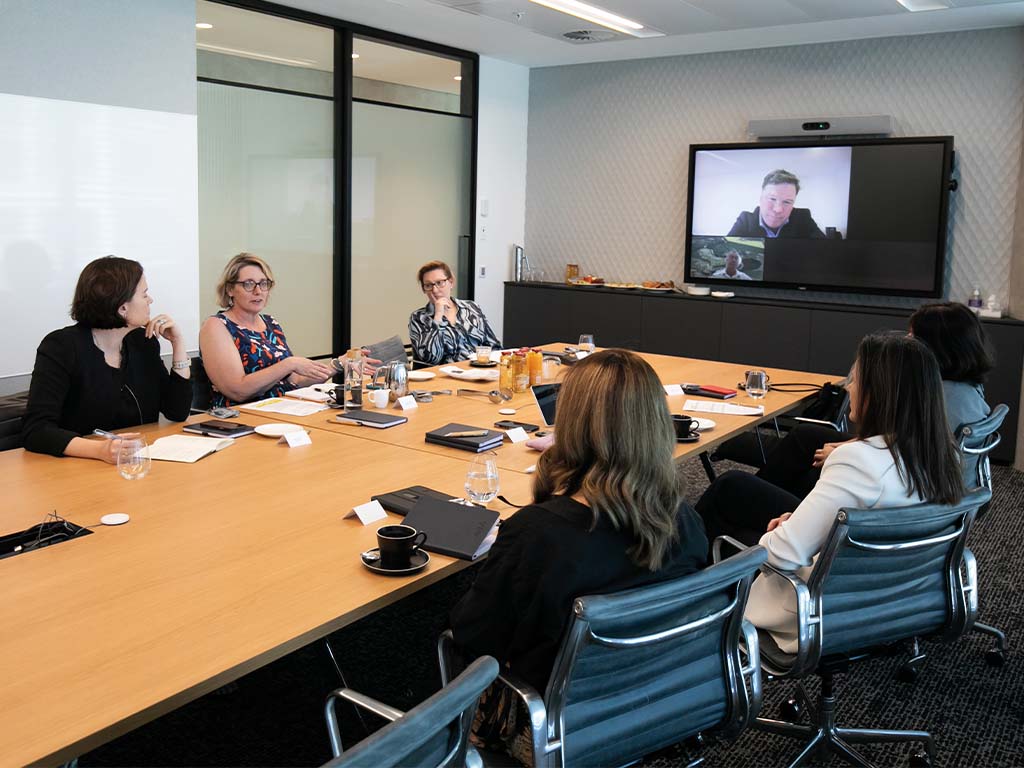
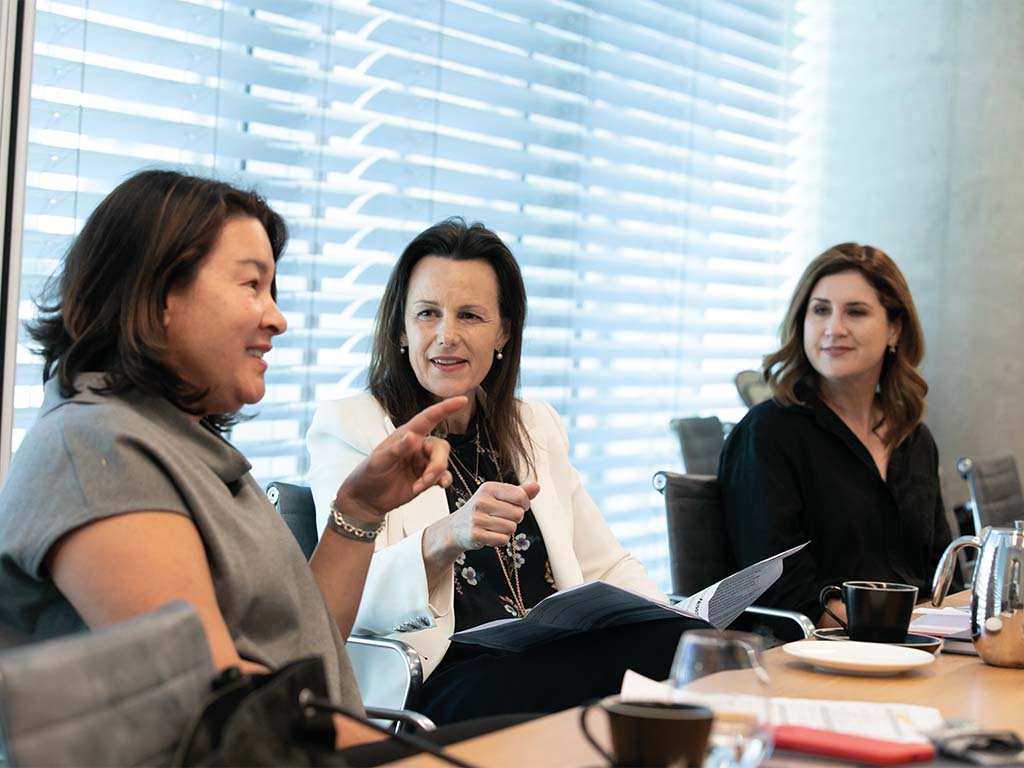
CAPITAL CONSIDERATIONS
Tapley What impact can the insurance sector have?
GRAY Swiss Re’s environmental, social and governance (ESG) framework prevents us from engaging with businesses which, for example, build on protected areas or do not have a net zero commitment. This approach sends a clear signal that businesses may not be able to attract the insurance – and, down the track, potentially labour, resources and finance – they need to operate.
Swiss Re estimates that there was US$270 billion of global economic losses from natural catastrophes in 2022. This relates to climate and doesn’t even begin to include the impacts of biodiversity loss. As an industry, we have learned that financial motivation is a big accelerator for action so speaking about commercial outcomes is one way to attract attention.
Businesses are focused on improving outcomes when it comes to their assets and services in, for example, the avoidance of damage and business interruption. They must learn to treat their natural assets and ecosystem services in the same way as any other financial asset.
Bennett There will be a price for a long-term sustainable future. How do institutional investors respond to this?
MURPHY Every company, super fund and institutional investor is talking about ESG, decarbonisation and, increasingly in the last eight months, biodiversity. They are developing strategies to invest with ESG-, decarbonisation- or biodiversity-rich outcomes. However, most have not worked out how to structure their portfolios or mandates to incorporate investment in nature and land management.
One of the main issues seems to be working out where natural capital fits into existing mandates and structures. Is it infrastructure, property or, depending on the growth profile, private equity? Investors are also not comfortable with how to treat the trade-off between fiduciary duty, returns and the nature outcome. Solving for how to invest in nature at scale is a work in progress.
At the moment, the intention is there but the structure is not – and policy is not particularly supportive. Governments worldwide describe nature as a national emergency but are not treating it as such. We aren’t seeing a response to the global nature crisis that matches the government response to the global health pandemic.
Humans are great at problem solving. But all the red tape and no pathway or resources means, in my view, that solving the nature crisis is going to take a lot longer than it should.
HOGG We also need to consider restoration. We need not only to preserve what we have but also restore what we have lost – and this costs a lot of money. This is not easy to raise for benefits that only become visible in 50 years when the corporate sector is seeking a return on investment that is immediately measurable. We need more investment on the ground and an economic solution – because it is clear that governments aren’t going to get us there. It needs a combined effort.
Credit where it is due
Carbon offsetting remains a controversial topic in climate finance. Biodiversity offsets and credits are, if anything, even more hotly debated given the more heterogeneous nature of local environments and ecosystems. There may still be a role for credits and offsets, even so.
TOWNSEND One way of achieving investment at the required scale could be through biodiversity credits. However, even as this market matures the risk is that companies use it as a way to mitigate their on-paper impact without fundamentally addressing the real impact across their supply chains.
Investment through offsetting has a place. But it can’t be at the expense of people and companies taking responsibility for their own footprint. Investment is required at scale and offsets are one mechanism to help achieve this. However, we also need to build frameworks and develop investor expectations that fit alongside the work businesses can do to measure their footprint and take responsibility for impacts right through their supply chain.
Most people who work in conservation are a little traumatised by the offset market, particularly in New South Wales – where habitat is destroyed in one place and an offset in a completely different ecosystem and habitat paid for in another. This will have its own long-term consequences.
SCORE CARD
Tapley Is Australia ahead of the biodiversity crisis compared with jurisdictions globally?
HOGG Australia is made up of a set of unique ecosystems. We are the sixth most diverse country in the world from a biodiversity index perspective. There are 17 countries in the world that make up 60-80 per cent of the world’s biodiversity, but only two – Australia and the US – are developed economies.
If we can’t work out a way to protect biodiversity in Australia – which is one country, one continent and has a developed economy – how can we expect developing countries to succeed?
WHITTON I agree that we have a set of unique opportunities in Australia. The economy is very focused on primary production and our geographic footprint is extremely diverse. At the same time, the investment system is sophisticated and arguably well-prepared to deal with these types of challenges.
The key is to find the most appropriate funding models. One frequent talking point is that Australia has a unique combination of nature need and financial experience. Many have asked how we can use this combination to create structures – such as public-private partnerships and other types of infrastructure financing – that recognise the broader value footprint of nature and manage opportunities, including across time, in a more clinical and codified way.
Pollination Group recently surveyed a large group of global investors on nature. An interesting finding is that investors are very focused on opportunities in nature today – far more so than they were on climate change at the same stage of development.
Slightly more than 60 per cent of the investors we surveyed said they are either fully – the vast majority – or partially focused on the opportunities. They are already identifying ways to push financing toward nature opportunities, a development that wasn’t anywhere near as evident at this stage in tackling climate change.
Moreover, while many investors are focused on risk and impact – whether systemic risk or environmental outcomes – a significant proportion are focused on short- or medium-term return potential.
In some ways this is a threat because it suggests investors are less concerned about possible damage caused by the footprint of the economy as it presently operates and the risks that arise from this. However, it also means there is significant institutional capital standing ready to be deployed into viable structures that improve nature – if we can build them.
This puts Australia in an advantageous position as a mega-diverse region with significant capital, a well-developed institutional finance sector and many of its citizens engaged in industries that have direct interaction with nature.
One of the main issues seems to be working out where natural capital fits into existing mandates and structures. Is it infrastructure, property or, depending on the growth profile, private equity? Investors are also not comfortable with how to treat the trade-off between fiduciary duty, returns and the nature outcome.
GRAY Swiss Re is working in countries like Indonesia, which seem to be ahead in acknowledging its natural capital and working on solutions to protect the landscape and related economic factors. For example, they are working on solutions to protect their coral reef, because of their heavy dependency on fishing. There appears to be more urgency and openness to innovation than we typically see in Australia. Perhaps developing countries are feeling greater impact from the biodiversity crisis.
Tapley Is the urgency coming from government or industry?
GRAY There is urgency from governments but it is enabled by the multilateral development banks. They play a significant role by providing a funding stream that helps governments take action and effectively allocate their resources.
For example, when Indonesia puts a value on the coral reef it becomes an asset class that can be included in its public asset inventory. All public assets in Indonesia are subject
to insurance, maintenance and inclusion in investment programmes.
HOGG I was surprised at the extent to which the Australian government fought to not let UNESCO include the Great Barrier Reef on its list of “in danger” world heritage sites. The government must have anticipated some benefit because it pushed incredibly hard on this. But if it had received the
in danger profile it would have potentially received further investment and protections. The reef significantly affects the local fishing industry in Queensland and New South Wales.
GRAY Government plays an important role in prioritisation, risk management and creating an enabling environment. While environmental regulation is critical, action is also determined by elements such as financial regulation. For example, globally, Swiss Re offers index-based – or parametric – insurance but the regulation in Australia makes some primary insurers less comfortable. Regulation needs to be supportive of enabling environments.
Whitton Why is it that regulation in Australia makes primary insurers less comfortable to provide these products?
GRAY In short, because it is not clearly defined and is thus open to interpretation. Index-based or parametric products could be viewed as derivatives rather than insurance. In developing markets, we tend to find there is more enthusiasm and open-mindedness to experiment with products and structures. In more mature markets where there are a lot of existing products – like Australia – it can be easier just to do what the market has always done.
We work with APRA [the Australian Prudential Regulation Authority] and we have engaged in education and information sharing. We also provide support to insurers looking to develop these products.
HOGG When we undertake conservation work with developing nations, for example in the South Pacific, we also tend to find there is a willingness to try something even if what we are proposing is not perfect or guaranteed to work.
In Australia, we have a societal mindset that a product or service has to be perfect before we can roll it out. There is a concern that, if we get it wrong, we will be taking a backward step. However, in my mind, having a half-finished product that will get us some way toward the success point is better than spending several years trying to ascertain the perfect market solution or product.
GRAY Some data is better than none. Even if we only get half-way, we have a case study and actual data from which to learn. Then, for the insurance community, we have historical data to feed into models, which helps inform pricing and other aspects.
TOWNSEND Something that has prevented the corporate sector from being able to fully address this issue is that it is hard to solve a problem that isn’t very well understood. Nature is innately complex, which businesses are only just now beginning to appreciate. Complexity is just part of the fabric of the problem and having access to data and ways of understanding measurement will help.
There are some key milestones we must achieve along the way but, assuming these can be overcome, we will reach a point where all we are missing is the strong business case – whether for investment in large-scale or long-term opportunities, or supply chain transformation. But first, we need to understand impacts and dependencies.
After two years of design and development, the TNFD launched its final recommendations this week. When we see the final TNFD framework, we hope it will provide a framework to help scope impacts and dependencies through a business lens.
We need to solve for the big capability uplift that is required as well as the capacity issue. All the issues businesses are grappling with at the moment are inextricably linked to collective global challenges. We are seeking to do something the business community has not historically been very successful at: building regenerative business models.
The success we have had with decarbonisation has come from decoupling business growth from our emissions footprint. As Mark mentioned earlier, there are some really good examples of water re-use applications. This is the circular economy at its best – and what we must do is find a way to ensure our leaders understand that it is not only about addressing climate.
Instead, we need to address climate, circular economies and nature-based solutions collectively, as a way of taking a fresh look at how our businesses operate in the long term, rather than constantly trying to solve for individual problems.
PATH FORWARD
HOGG My world is filled with uncertainty. Every day is uncertain – but the reason I like being a scientist is that it is my job is to try to find solutions to unanswered questions. However, there is a very big gap between the mindsets of the science and finance communities. There will never be certainty in nature. We need to learn and develop a common language to bridge the gap, helping the finance community deal with the level of uncertainty that comes from interacting with nature.
TOWNSEND Ironically, though, risk mitigation through nature-based solutions can help address some of these inherent challenges.
GRAY We also need to avoid overcomplicating the issue. There is a lot of discussion about capturing data, and standardisation of measurements and metrics. While global standards are clearly the goal, we know they are not available to us yet.
Despite this, Swiss Re has been able to provide reinsurance cover in Brazil based on the cost of replanting. It is a relatively easy valuation and, in the absence of something better, it is a good start. It means there is activity to form the basis of a case study, allowing teams of actuaries and scientists can get on with their modelling.
HOGG We are just about to get a pilot into this exact topic underway with Sydney University. We will be exploring how we can carry out a full biodiversity assessment at scale using remote sensing tools and what the cost of doing so is. As a scientific community, we are still unable to provide definitive answers. We can’t even agree on three metrics we can use for biodiversity.
BENNETT To be optimistic for a moment, there is a lot of trial and error going on across Australia. There is private adoption and adaption, and plenty of willing partners to projects. What they add up to collectively is yet to be seen but they are already creating some very positive outcomes.
WHITTON It is incumbent on the various groups involved with nature – the scientific community, finance and commerce, and industries themselves – to try to find a way to simplify the work. In our industry, we have a tendency to sit back and admire the problem in depth then get together and talk about how outrageously complicated it is. We can’t afford to do this with nature or the task will put too much stress on many businesses.
BENNETT The supply chain comes into play here – and this is where some of the investment capital is being directed. If a business is sourcing food for consumers, there is currently a substantial drive to account for the entire supply chain, through scope-three requirements, as the company takes a product to the store shelf.
My view is that co-investment and activity through the supply chain will create a better, demonstrated balance for the environment as food and fibre are produced. But it needs to be done in an informed and fair way that takes full consideration of all participants in the chain.
Ultimately, this will still add up to a better outcome whether it is driven by a large fund or by an investment in a company that creates change through its supply chain. Ideally, there is a consumer part to play and to help pay, because without margin there is no production.
It is a good space for investment and one where innovation is likely. Large investors can drive positive change from the ground level up. But individual farmers will need an appropriate level of time and support as their own capital base can be quite limited and income levels highly variable through the seasons. Again, there needs to be the right level of incentive to ensure positive change can be enacted.
WHITTON It is important that we find ways to make it tractable, whether via the supply chain or by prioritising some factors over others.
MURPHY We talk a lot about getting the right data sources. If we find a solution for this we will be able to finance the problem. A lot of this will be learning by doing. It is hard to know what the perfect framework is, unless we are doing it and doing so at scale.
An added issue for investors is greenwashing. There is almost too much talk about the risk of investing where the outcome is uncertain. But a bigger risk than the initial investment being seen as greenwashing is that there is no investment at all, simply because institutions are too wary of investing in something uncertain.
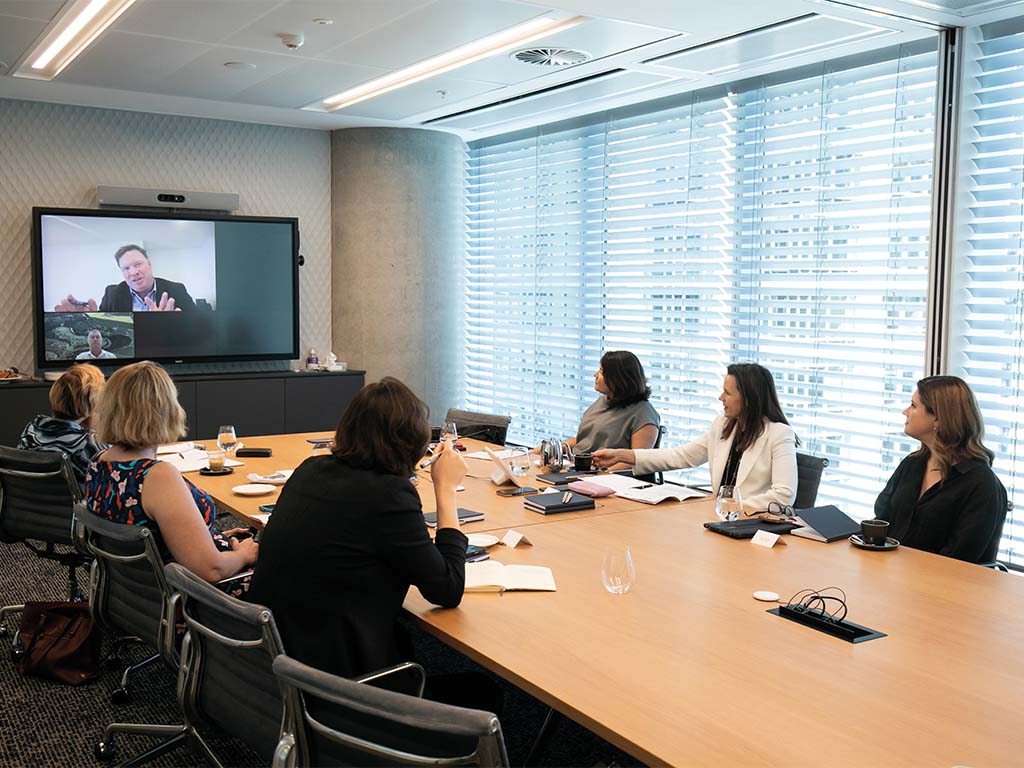
I agree that – with what we already know, which will be refined over time – we can have an impact and invest at scale using the methodologies that already exist.
By contrast, the fact that the market is still evolving is almost a good way for institutional investors to kick the can down the road. The sustainable agriculture pathway that already exists should provide comfort to investors that the frameworks and data will develop and improve over time.
BENNETT There can be a scaled efficiency or a cultural advantage here, depending on whether we are talking about a big, diversified fund or a mid-market investor in Australian farming. This where a one-size-fits-all solution is not the perfect outcome.
MURPHY Farmers with smaller or more fragmented blocks can’t undertake these trade-offs. This is where corporate agricultural institutional investment at scale actually can lead the way, because there is a greater buffer for risk.
Whitton We talked about finding the pieces of work that we can do early, before we know all the answers. Are there examples of this that demonstrate good outcomes?
GRAY As a risk organisation, we have models that identify climate risks such as floods, drought and storms. Clients provide us with their data so we can examine their asset exposure.
In south-east Asia, we are looking specifically at reef data and applying Swiss Re’s climate risk insights to ascertain the insurable solutions in the same way as we would identify these for human-made property. We are doing this in Indonesia and the Philippines, and there will be several good outcomes from this work that we could replicate in Australia.
TOWNSEND Within our business, we have had a few attempts at piloting the TNFD framework. We have had some success with being better able to understand the problem and improve nature literacy. Our next challenge will be how we scale this and apply it across our entire business. We have more than a thousand ingredients in our supply chain across 36 countries and we work with more than 170 suppliers. Many of these suppliers source from hundreds of farms to get a specific ingredient. How we scale will be the next challenge.
We have undertaken this work with Pollination and it has taken us a couple of years to fully understand how the frameworks apply to our business and how to integrate them. The best advice I can give to anyone who has not already started is just to get going. The most important thing is to start on the path now and therefore to be in a position to identify at-scale solutions.
Blackmores is a member of the Climate Leaders’ Coalition, which has carried out a deep dive into value in nature. It has been truly inspiring to see the appetite to find an approach that lets us get started on nature preservation. This is what we are working on within the deep dive at the moment: how the business community can create on-ramps to TNFD and LEAP [locate, evaluate, assess, prepare] nature-risk assessments.
There are many competing considerations within businesses, including stakeholders, geographies, organisational boundaries and nature interfaces. Before we can understand all of this, we need to understand how we create value.
The role collaboration can play in how we reach the next stage really cannot be underestimated, whether this is across value chains or sectors, or simply across different influences on the commercial model. This is where we will be able to attain the speed and scale we know we need.

WOMEN IN CAPITAL MARKETS Yearbook 2023
KangaNews's annual yearbook amplifying female voices in the Australian capital market.








